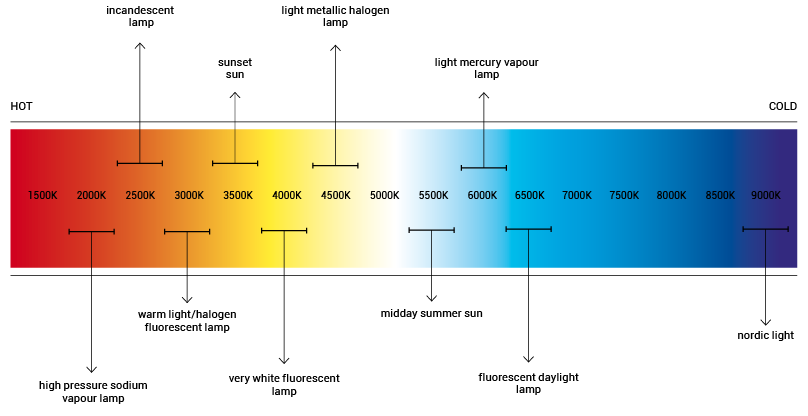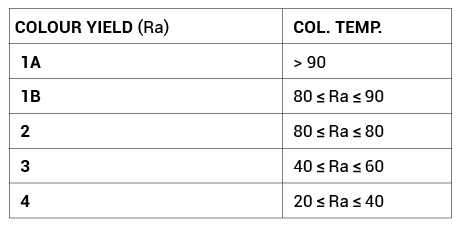
TECHNICAL LIGHTING NOTIONS: COLOUR TEMPERATURE and CHROMATIC YIELD
COLOUR TEMPERATURE
The colour temperature of a light source is based on the principle that an incandescent item changes colour as the temperature increases. The theoretic principle this measurement is based on is the “radiating black body”. As the temperature increases, the black body gradually changes from red to orange, to yellow, to white to finally reach white-sky blue.
This measurement is expressed in Kelvin degrees (K). The following diagram shows its trend:

CHROMATIC YIELD
The chromatic yield of light source corresponds to the ability to recognise the colours of an exposed item.
This need varies with the item: generally it is more marked for multi-coloured items and lower in monochrome items.
The chromatic yield indicator (Ra) is a system that has been derived from vision experiments to assess the impact exercised by different light sources on the colour that is perceived of items and surfaces.
First of all the colour temperature of the light source must be identified. Secondly, eight sample colours are lit by the lamp being studied, and the results are compared with those of a “black body” which has been taken to the same colour temperature. If none of the samples change chromatically, the light source is recognised an Ra of 100. As the performance worsens a lower mark is granted. Generally speaking, light sources with an Ra equal or higher than 80 are assigned good chromatic yield properties.

